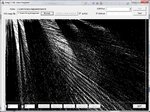boylesg
Advanced Member level 4

- Joined
- Jul 15, 2012
- Messages
- 1,023
- Helped
- 5
- Reputation
- 10
- Reaction score
- 6
- Trophy points
- 1,318
- Location
- Epping, Victoria, Australia
- Activity points
- 11,697
I understand the idea of control points - a start coordinate for the spline, an end point for the spline and a coordinate each for the top/bottom of all the curves.
I get that the formula for a cubic equation is Y = aX3 + bX2 + cX + d
I get the concept of derivatives in calculus.
So the first derivative of a cubic equation has the form of Y = 3aX2 + 2bX + c and the second derivative has the form Y = 6aX + 4b.
So I remember from maths in the 80s that the derivative of a quadratic equation will give you the gradient of the curve at any point X.
So I assume the second derivative of a cubic equation similarly gives you the gradient of the curve at an point X?
Question 1: What does the first derivative of a cubic equation tell you about the curve if the second derivative gives you the gradient at any point X?
Question 2: How do you use the second derivative to calculate a series of lines that define a close match to the curve given an iteration interval between two control points?
Question 3: Given the control points, how do you work out the cubic equation that you can then work out the derivatives from?
I have been trying to understand the process from written tutorials but have been finding it confusing. Perhaps a diagramatic description of the process would be easier to 'get'.
I get that the formula for a cubic equation is Y = aX3 + bX2 + cX + d
I get the concept of derivatives in calculus.
So the first derivative of a cubic equation has the form of Y = 3aX2 + 2bX + c and the second derivative has the form Y = 6aX + 4b.
So I remember from maths in the 80s that the derivative of a quadratic equation will give you the gradient of the curve at any point X.
So I assume the second derivative of a cubic equation similarly gives you the gradient of the curve at an point X?
Question 1: What does the first derivative of a cubic equation tell you about the curve if the second derivative gives you the gradient at any point X?
Question 2: How do you use the second derivative to calculate a series of lines that define a close match to the curve given an iteration interval between two control points?
Question 3: Given the control points, how do you work out the cubic equation that you can then work out the derivatives from?
I have been trying to understand the process from written tutorials but have been finding it confusing. Perhaps a diagramatic description of the process would be easier to 'get'.


